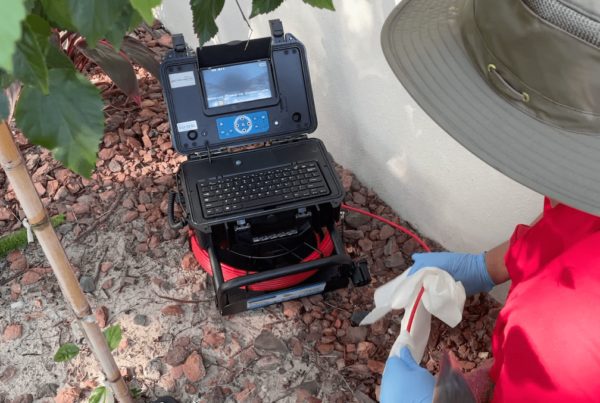
As a new home buyer, you have a lot of emotions. Things can be exciting, but you may experience nervousness. This nervousness can definitely stem from the home inspection.
However, it does not have to be this way with your home inspector. It is important to make a good connection with your home inspector so you can feel confident in your home purchase. Furthermore, it is important you understand what his/her home inspection report means when you go to read it.
In this blog, we are going to cover how to read and understand your home inspection report so you can make a better informed decision.
What Is A Home Inspection?
Before we get started, you should understand what a home inspection is.
A home inspection is a limited, non-invasive inspection of a property.
What This Means
Home inspectors are like general practitioners. So, an inspector only reports on their findings and then recommends a qualified specialist further evaluate and repair/replace, if needed.
Also, home inspectors have a limited time to inspect that is non-invasive. Home inspectors generally take 1-3 hours to inspect a home (depending on the size). So, we can not do things that are technically exhaustive, undermines our safety, or can make us liable for something.
To illustrate, inspectors will not move personal belongings (liability), will not crawl in crawlspaces with standing water (safety), and cannot report on every damaged shingle including its location (technically exhaustive).
Rather a home inspector will say: this item could not be inspected due to owner’s personal belongings, there was standing water in the crawlspace therefore the crawlspace could not be inspected, there was various damage to the roofing shingles, we recommend a licensed roofer further evaluate and repair/replace.
This is not saying a home inspector will not move someone’s jacket covering the water heater or crawl the entire crawlspace if they can fit or tell you where one broken outlet is. This just means, we have to put a limit somewhere. Chances are, if you choose a well rated home inspection company you should be in good hands.
Side Note: A home inspector cannot and should not give you real estate advice on what you should or shouldn’t do.
Now that we know what a home inspection is, let’s get into our actual topic.
The Sections of a Home Inspection Report
Almost every home inspection report is made up of these sections:
- Cover
- Notes About The Property
- Legal Terms
- Roof
- Attic
- Electrical
- Plumbing
- A/C & Heating
- Crawlspace
- Basements
- Foundation & Grading
- Exterior
- Interior & Bathrooms
- General Summary
Knowing this, it is important for you to understand the basic three parts. The introduction and legal, the parts of the home, and the general summary.
Each home inspection report can be broken down into those different sections, each one with a different purpose. Let’s talk about them.
The Introduction & Legal
The introduction basically tells you about the general property and the weather conditions.
In here, the inspector might include who was there, if it was raining, if it has been dry the past 3 days, the year built, the square footage, and much more.
Also, inspectors may mention to understand the entire inspection process, it is pertinent you read your entire report.
The legal part might be just in the introduction, at the end, or sprinkled throughout the entire report.
For example, a home inspector might include areas of the attic that were not accessible in the attic section of the report. Also, the inspector might include that the home was occupied with furniture. Therefore, they could not see behind the owner’s personal belongings like the couch.
What You Need To Understand
The introduction tells you about the property in general and the conditions of the inspection. The legal section will help you understand what the inspection actually includes.
You should thoroughly read through all legal paragraphs and through the introduction to understand what the inspector can report on for your home.
Reporting on Parts of the Home
This will include all the different building blocks of the home.
For this blog, we will focus on the overview of all sections. Each section of the home, will report on the 3 M’s.
- Maintenance Items
- Minor Items
- Major Items
Maintenance Items
This will cover items that need general maintenance like changing you air handler filter every 1-3 months. It is important to understand maintenance items do need to be completed sooner rather than later.
Maintenance items that are not maintained, can turn into minor or major items.
Minor Items
These items might be small cracks in the drywall or perhaps damaged cabinets. While these items pose no danger, you might want to consider looking at them once you have ownership of the home.
Major Items
These are the items in the report that need attention sooner rather than later. They could be safety issues for kids, or they could be active roof leaks. It is up to you and and your Realtor to determine if these items need to be repaired/replaced before you close on a home.
What You Should Understand
Minor and maintenance items although may not be a big deal right now, you should still try to fix them once you get ownership of the property.
Major items in the report are generally highlighted in red and are in the general summary. These items are up to your interpretation for how serious they are to you.
As an example, missing pool alarms might be a major item for a family with kids. But if you do not plan to have any kids at the home, then maybe a pool alarm is not necessary for you.
You should read each section of the home thoroughly and think about what is important to you. Also, you should speak with your Realtor or home inspector if you have any questions on any items.
The General Summary
This is usually the last part of your home inspection report. In most cases, home inspectors will include the major items in this section, and add others they see fitting.
The general summary is up to the home inspector’s discretion, so everything in the report is important. On the other hand, the general summary can be used as a guiding tool for you and your Realtor.
Concluding
If you are purchasing a home and having a home inspection completed soon, you should do your best to attend the inspection.
Building a relationship with your home inspector can help ease your nervousness once your receive your home inspection report.
If you have not already, I also recommend reading our home inspection expectations for buyers guide.
You may also want to read about home inspector limitations so you can see what they can and cannot do on their inspection.



